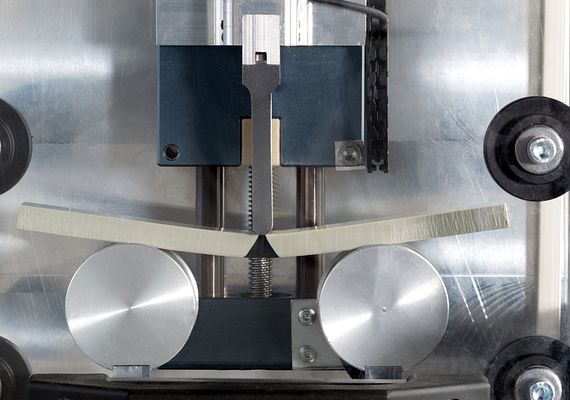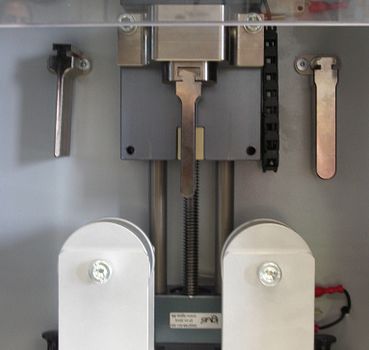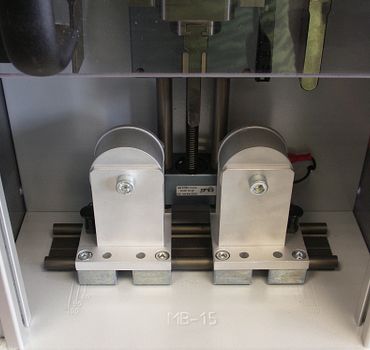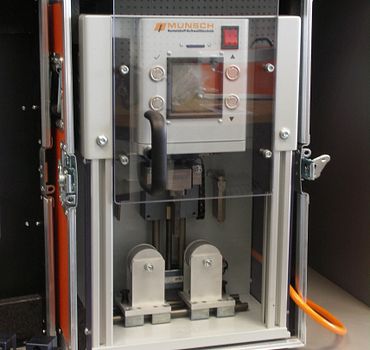User report
Linear axis for precision, clearance-free welding seam bend testing device
No lubrication or maintenance: A lead screw linear system and a linear rail for weld seam testing
Munsch Kunststoff-Schweißtechnik GmbH uses lubrication-free linear axes and linear bearings from our drylin product range for its weld seam bend testing equipment. The testing equipment was originally part of a practical project by the company's trainees. The testing device works so well that is it now entering series production.Profile
- What was needed: drylin SHT linear system, drylin W linear guide
- Requirements: high positioning accuracy, as free of clearance as possible, robust, durable, lubrication-free, resistant to dirt
- Industry: industrial testing equipment
- Success for the customer: The bend testing device for weld seams can test bending specimens in accordance with DVS 2203-5 up to a plate thickness of 15mm or a maximum force of 5,000N. It all requires no lubrication or maintenance and is durable. What started as a trainee project then went into series production.
You can see an overview of our linear axes here
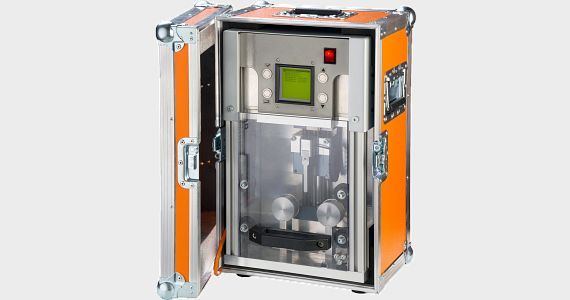
Problem
Munsch Kunststoff-Schweißtechnik GmbH stands for quality and reliability in containment and landfill construction. Ease of use and mature design make their hand welding extruders a professional, straightforward tool for welding thermoplastics. Quality is paramount in product development, production, and testing. Our equipment must work properly even under difficult climatic conditions, for instance.During their training, two industrial clerks, four cutting machine operators, a technical draughtsman, and an industrial technician formed a project team. The goal was to design a bend testing device that could test the quality of a plastic welded seam according to the relevant regulation, DVS 2203-5. This involves a destructive test for which the measurement results are recorded or documented. During welding of a wide variety of plastics, the bending device was to test the quality of various welded seams such as extruder or butt welded seams and record the data.
The primary criteria for the actual measuring process are positioning accuracy and zero testing device clearance. Robustness, long service life, and elimination of lubrication and maintenance were especially important for the entire machine because it will be deployed mainly on construction sites.
Solution
In the bend testing device, the format is adjusted with a lead screw linear system from the drylin SHT product range. This involves a lubrication-free linear axis driven by either a trapezoidal or high helix thread or toothed belt. From lightweight solid plastic units to solid stainless steel solutions, the user can always find a customised solution. For all systems, the stroke length is freely selectable and drive is either by hand wheel or motor.Specifically, Munsch is using a standard solution with trapezoidal thread and motor. The linear unit's shaft diameter is 12 millimetres. The shaft's material is hard-anodised aluminium.The three support distances specified by DVS are implemented with a drylin W linear guide. The cost-effective, pre-assembled linear rail with carriage allows maximum design flexibility and easy installation. Hard anodised aluminium rail material is used to achieve the best friction and wear results. Since the drylin SHT linear axis requires absolutely no external lubrication, the system is extremely resistant to dirt – a feature that is particularly important on construction sites. In the bend testing device, a round double rail with pillow block demonstrates its robustness in locking and in absorbing the forces from the each plastic test specimen. In addition to the two linear guides, an energy chain made of plastic is used to measure testing stamp pressure. Overall, the testing device was so impressive that the system then went into series production at Munsch.
Bend testing device goes to series production
Working with Munsch, we used the technical specifications as a basis to develop a solution from our product range. Once the sample parts were installed and the system worked, a single unit of each of the two linear products was initially ordered.The project team's testing equipment worked well and went into series production. Regardless of material, the device can be used to test bending specimens according to DVS 2203-5 for plate thicknesses of up to 15 millimetres or a maximum force of 5,000 newtons with a travel of up to 90 millimetres. The bending device is suitable for operation in the workshop or on construction sites, and at just under 29 kilograms, it is readily transportable. The samples are tested inside the transport box supplied, so the device is well protected from dust, dirt, and dampness.
